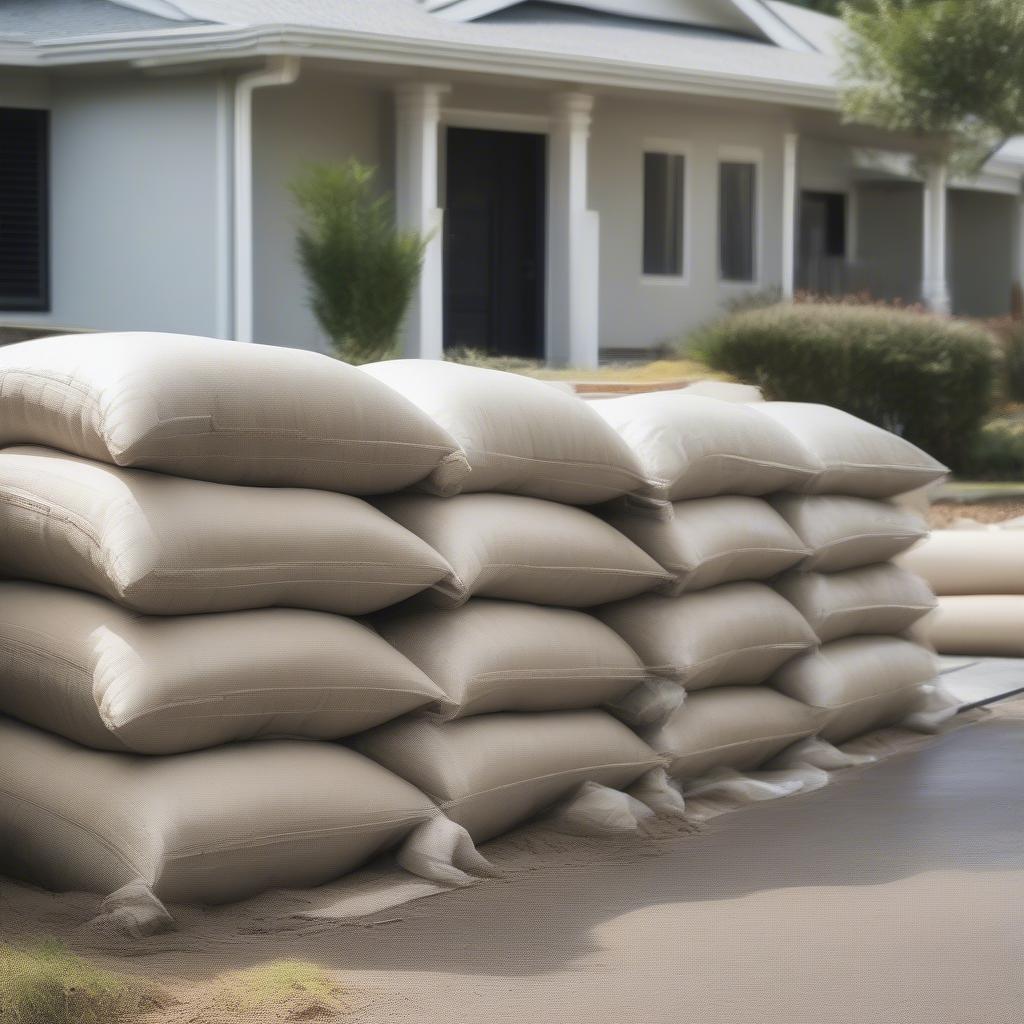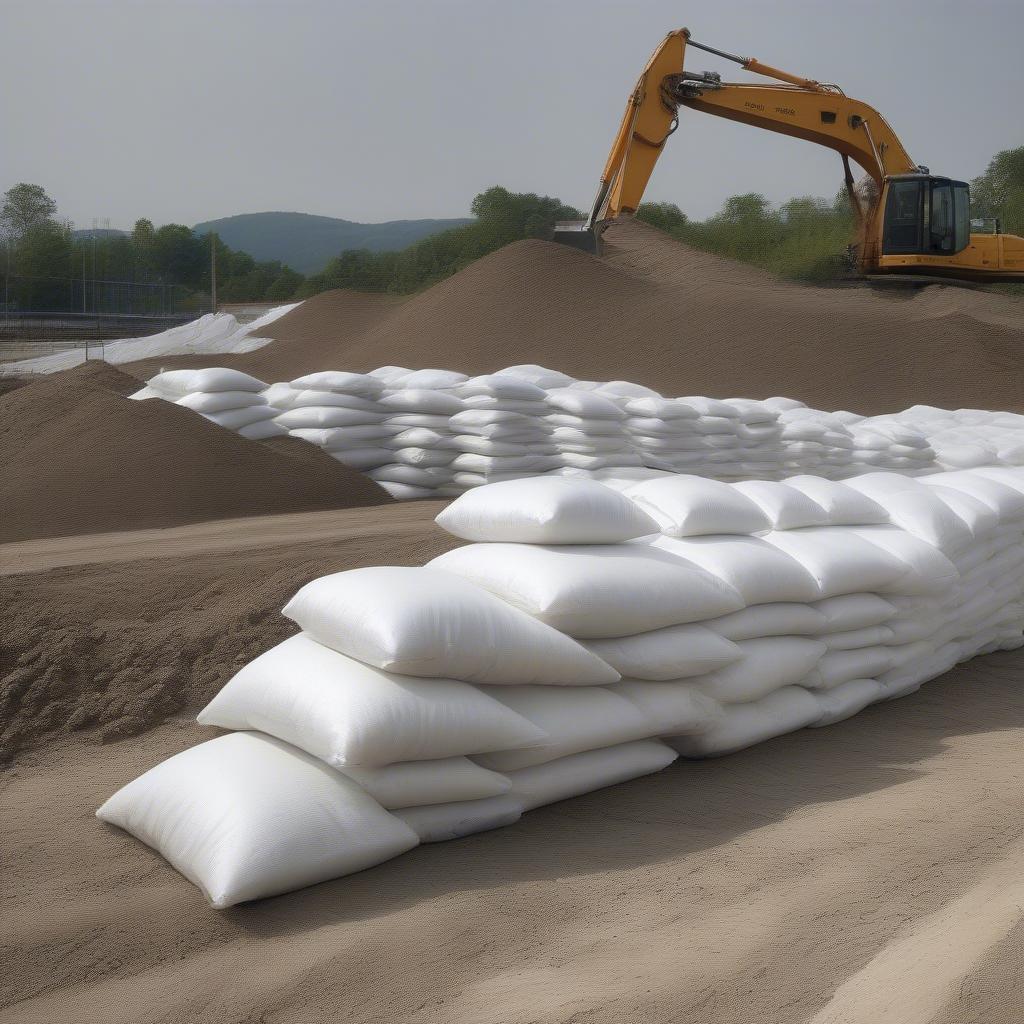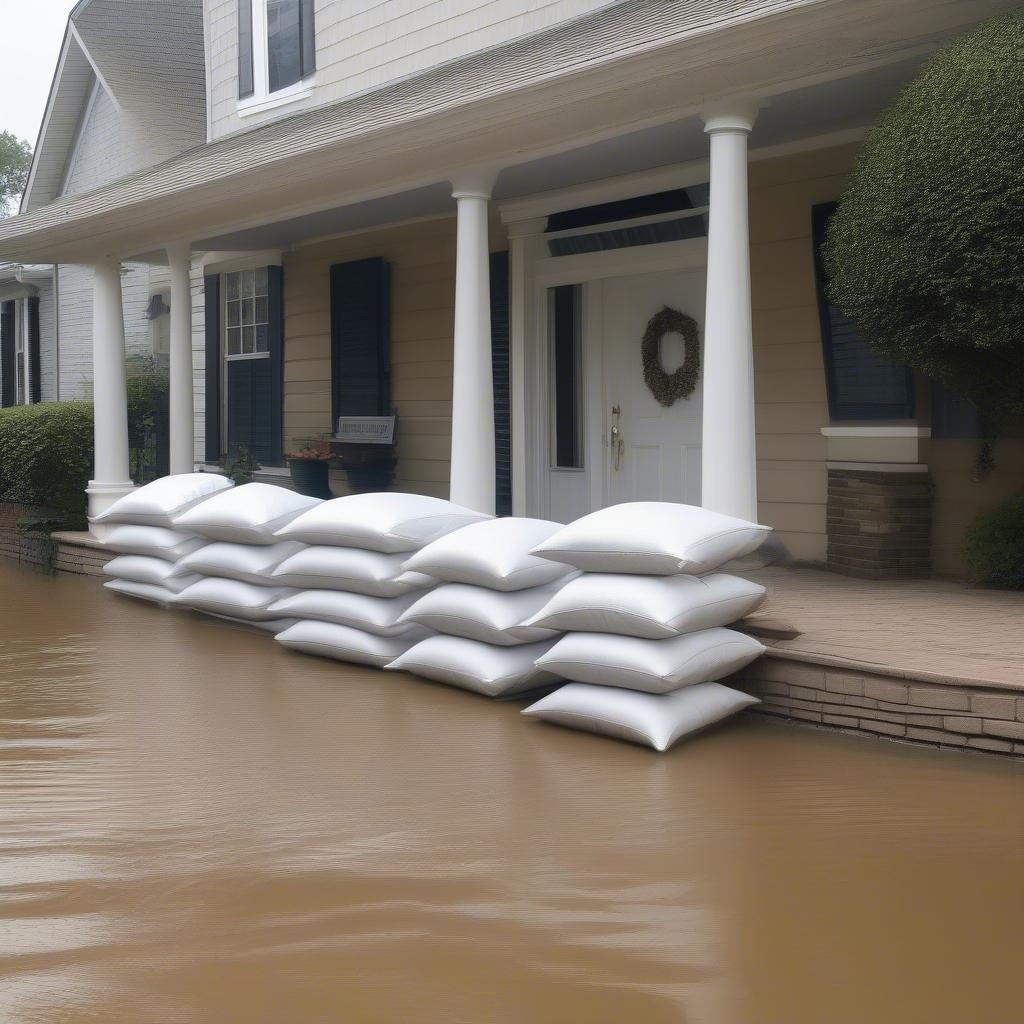Woven Bag
14×26 Woven Polypropylene Sandbags: The Ultimate Guide
14×26 woven polypropylene sandbags are a versatile and cost-effective solution for flood control, erosion prevention, and construction projects. From protecting your home during heavy rainfall to creating temporary barriers, these durable bags offer a reliable way to manage water and soil. This comprehensive guide dives deep into everything you need to know about 14×26 woven polypropylene sandbags, from their construction and uses to proper filling and placement techniques.
Understanding 14×26 Woven Polypropylene Sandbags
Woven polypropylene sandbags are constructed from woven polypropylene fabric, a strong and tear-resistant material that can withstand harsh weather conditions. The 14×26 inch measurement refers to the dimensions of the bag before it is filled. This size is a popular choice due to its manageable weight when filled and its ability to create effective barriers. These bags are typically UV-treated, offering increased resistance to sun damage and prolonging their lifespan, making them a cost-effective solution in the long run. Unlike traditional burlap sandbags, polypropylene bags are resistant to rot and mildew, adding to their durability.
 Woven polypropylene sandbags used for flood control
Woven polypropylene sandbags used for flood control
Are you wondering about the benefits of choosing woven polypropylene over other materials? Polypropylene is significantly lighter than alternatives like burlap or jute, making it easier to transport and handle, especially during emergency situations. Furthermore, its water resistance ensures that the sand within remains dry and effective, even during prolonged exposure to moisture.
Applications of 14×26 Woven Polypropylene Sandbags
These versatile bags are useful in a range of applications:
- Flood Control: During periods of heavy rain or flooding, these sandbags can be strategically placed to divert water flow and protect properties from damage.
- Erosion Control: On construction sites or areas prone to erosion, these bags can be used to stabilize slopes and prevent soil loss.
- Construction Projects: They can be used as temporary weights or supports during various construction phases.
- Military and Disaster Relief: Often employed in military fortifications and disaster relief efforts to create protective barriers.
- Landscaping: Used for creating raised garden beds, retaining walls, and other landscaping features.
 Sandbags used for erosion control on a construction site
Sandbags used for erosion control on a construction site
Filling and Placement of Sandbags
Proper filling and placement are crucial for maximizing the effectiveness of sandbags:
- Filling: Fill bags only half to two-thirds full. This allows the bags to conform to each other and create a tight seal when stacked.
- Placement: Place bags with the folded top facing upstream or towards the direction of the anticipated water flow.
- Stacking: Stagger bags like bricks, overlapping each layer. This creates a more secure and effective barrier.
Choosing the Right Sandbag
While all 14×26 woven polypropylene sandbags share a common purpose, there are some variations to consider:
- UV Protection: Opting for UV-treated bags ensures longer life, especially in areas with strong sunlight.
- Quantity: Consider the scale of your project and purchase enough bags to create an adequate barrier.
 Stacked sandbags protecting a home from flooding
Stacked sandbags protecting a home from flooding
Conclusion
14×26 woven polypropylene sandbags are a valuable resource for a wide variety of applications, from protecting your home from flooding to preventing erosion on construction sites. Understanding their benefits and proper usage can help you effectively utilize these durable and versatile bags. Choosing the right 14×26 woven polypropylene sandbags can make all the difference in protecting your property and managing water flow efficiently.
FAQ
- How many 14×26 woven polypropylene sandbags do I need? The number of sandbags needed depends on the length and height of the area you need to protect.
- What type of sand should I use to fill the bags? Clean, dry sand is recommended. Avoid using sand with organic material or clay.
- How long do woven polypropylene sandbags last? UV-treated bags can last several years, even in direct sunlight.
- Are these sandbags reusable? Yes, they can be emptied and reused multiple times.
- Where can I buy 14×26 woven polypropylene sandbags? These bags are readily available at hardware stores, home improvement centers, and online retailers.
- Can I use these sandbags for landscaping purposes? Yes, they are often used for creating raised garden beds and retaining walls.
- How do I dispose of used sandbags? Check with your local waste management department for proper disposal guidelines.
Scenarios and Questions
Scenario 1: Heavy rain is forecast, and you live in a flood-prone area. Question: How can I quickly and effectively protect my property using 14×26 woven polypropylene sandbags?
Scenario 2: You are planning a landscaping project that requires a retaining wall. Question: Can I use 14×26 woven polypropylene sandbags to build a retaining wall, and how should I go about it?
Scenario 3: You are managing a construction site and need to control erosion on a slope. Question: What is the most efficient way to use 14×26 woven polypropylene sandbags to prevent soil loss?
Related Articles
- Choosing the right type of sandbag for your project
- Flood prevention techniques for homeowners
- Erosion control methods for construction sites
For further assistance, please contact our 24/7 customer support team at Hotline: +84 388 951 999 or visit our offices in Hanoi, Vietnam, or Tech Avenue, Suite 12, San Francisco, CA 94105, USA.
